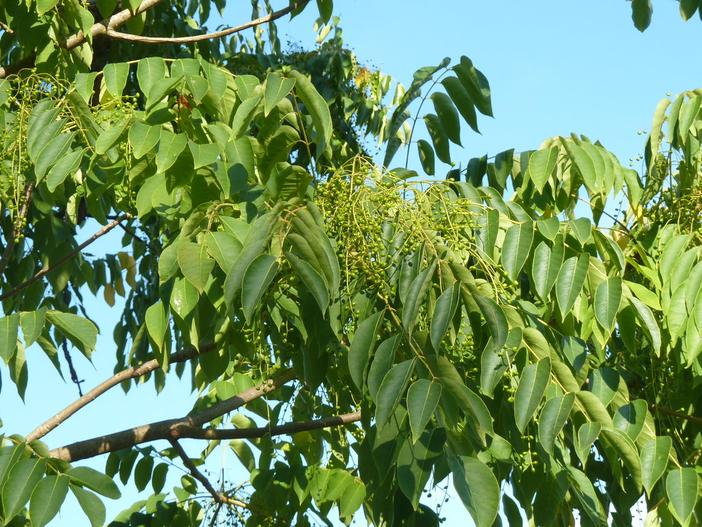Chinese Lacquer Tree
(Toxicodendron vernicifluum)
Chinese Lacquer Tree (Toxicodendron vernicifluum)
/
/

Wendy Cutler
CC BY 2.0
Image By:
Wendy Cutler
Recorded By:
Copyright:
CC BY 2.0
Copyright Notice:
Photo by: Wendy Cutler | License Type: CC BY 2.0 | License URL: https://creativecommons.org/licenses/by/2.0/ | Uploader: wlcutler | Publisher: Flickr











Estimated Native Range
Summary
Toxicodendron vernicifluum, commonly known as the Chinese lacquer tree, is a deciduous tree native to the forested regions of China and the Indian subcontinent, and it is also traditionally cultivated in China, Japan, and Korea. It can grow up to 66 feet (20 meters) tall and is characterized by its large, pinnately compound leaves with 7 to 19 leaflets that turn yellow in the fall. The tree is best known for its toxic sap, which is harvested and used to produce a highly durable lacquer for fine Chinese, Japanese, and Korean lacquerware. The sap contains urushiol, which can cause severe allergic reactions.
The Chinese lacquer tree is valued for its historical and cultural significance in East Asian lacquerware production. It is not commonly grown in Western gardens due to its toxic sap and potential invasiveness. In cultivation, it requires well-drained soil, moderate water, and can tolerate full sun to partial shade. It is important to handle this tree with care due to the risk of skin irritation from its sap. When grown outside its native range, it can become invasive, so it is essential to check local regulations before planting.CC BY-SA 4.0
The Chinese lacquer tree is valued for its historical and cultural significance in East Asian lacquerware production. It is not commonly grown in Western gardens due to its toxic sap and potential invasiveness. In cultivation, it requires well-drained soil, moderate water, and can tolerate full sun to partial shade. It is important to handle this tree with care due to the risk of skin irritation from its sap. When grown outside its native range, it can become invasive, so it is essential to check local regulations before planting.CC BY-SA 4.0
Plant Description
- Plant Type: Shrub, Tree
- Height: 40-60 feet
- Width: 25-35 feet
- Growth Rate: Moderate
- Flower Color: Green, Yellow
- Flowering Season: Spring
- Leaf Retention: Deciduous
Growth Requirements
- Sun: Full Sun
- Water: Medium
- Drainage: Medium
Common Uses
Natural Habitat
Forested regions of China and the Indian subcontinent
Other Names
Common Names: Chinese Lacquer Tree, Poison Ivy, Japanese Lacquer Tree, Japanese Sumac, Japanese Varnishtree, Varnish Tree, Lacquer Tree
Scientific Names: , Toxicodendron vernicifluum, Ailanthus scripta, Rhus himalaica, Rhus kaempferi, Rhus succedanea var. himalaica, Rhus succedanea var. silvestrii, Rhus vernicifera, Rhus vernicifera, Rhus vernicifera var. silvestrii
GBIF Accepted Name: